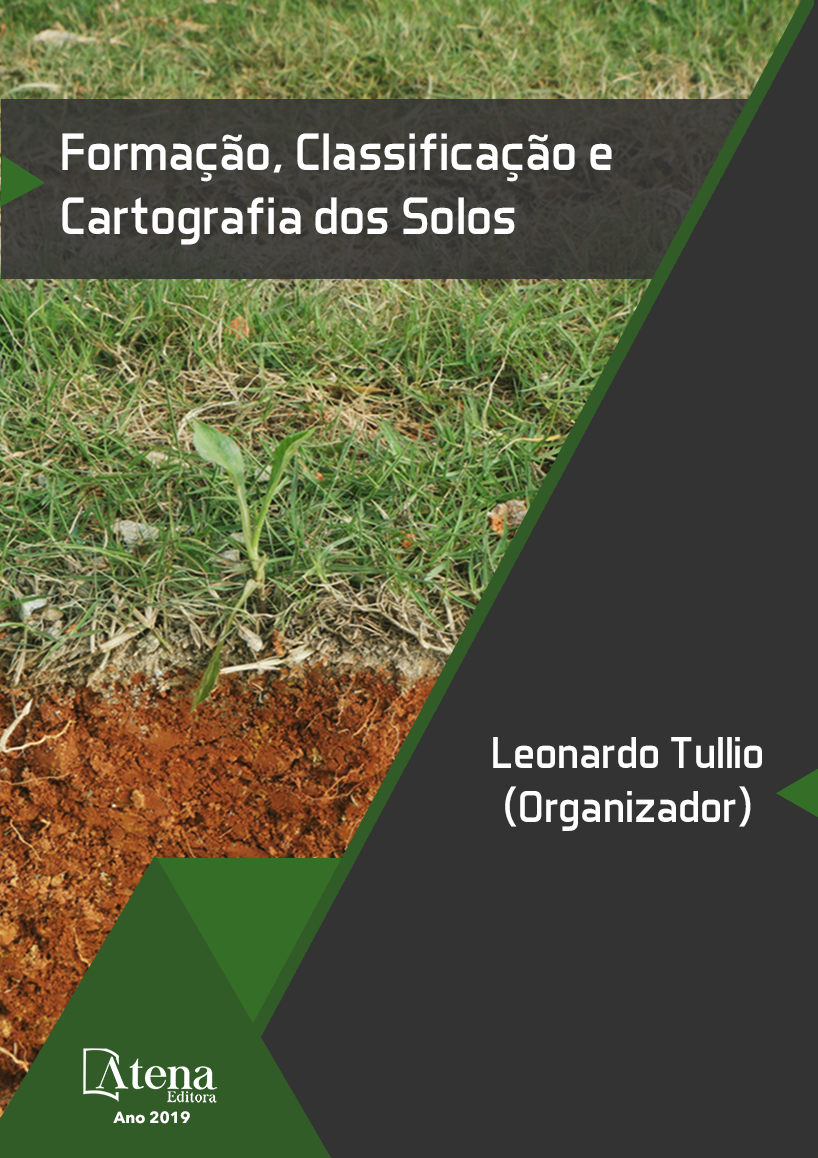
ESTADO NUTRICIONAL E PRODUTIVIDADE DA SOJA APÓS APLICAÇÃO DE CALCÁRIO E GESSO COM E SEM REVOLVIMENTO DO SOLO
A aplicação de calcário e gesso
agrícola promovem alterações na química
do solo e podem influenciar na produção das
culturas. Este estudo foi realizado para avaliar
o estado nutricional e a produção de grãos da
soja devido o uso de calcário e gesso aplicados
isolada ou combinadamente em sistemas
de preparo do solo plantio direto e preparo
reduzido. O experimento foi estabelecido à
campo nas safras de 2013/14 com localização
em Erebango, Estado do RS. O delineamento
experimental utilizado foi o blocos ao acaso,
com três repetições e design fatorial 4x2. Os
tratamentos testados foram: sem aplicação de
calcário e gesso agrícola (testemunha); 2.500 kg
ha -1 de calcário; 2.500 kg ha -1 de gesso agrícola
e 2.500 kg ha -1 de calcário + 2.500 kg ha -1 de
gesso agrícola nos sistemas de preparo do solo
plantio direto e preparo reduzido. A aplicação dos
tratamentos foi realizada antes da semeadura da
soja. O aproveitamento de nutrientes pela soja
não foi prejudicado pela aplicação de calagem
ou gesso em ambos os sistemas de preparo
do solo. As concentrações de nutrientes nas
folhas diagnósticas permaneceram dentro das
faixas de suficiência para a cultura. A aplicação
de calcário combinado com o gesso agrícola
comparativamente com a aplicação isolada de
calcário ou de gesso proporcionou as mais altas
produções de grãos na soja nos dois sistemas
de preparo do solo.
ESTADO NUTRICIONAL E PRODUTIVIDADE DA SOJA APÓS APLICAÇÃO DE CALCÁRIO E GESSO COM E SEM REVOLVIMENTO DO SOLO
-
DOI: 10.22533/at.ed.34819230910
-
Palavras-chave: Sistemas de preparo do solo; Calagem e gessagem; Glycine max; nodulação; nutrientes nas folhas diagnósticas.
-
Keywords: Soil preparation systems; Liming and gypsum applications; Glycine max.; Nodulation; Nutrients in Diagnostic Leaves.
-
Abstract:
The limestone and gypsum
applications promote changes in soil chemistry
and can influence in crop production. This
study was carried out to evaluate the nutritional
status and grain yield of soybeans due the
use limestone and gypsum applied alone or in
combination with no tillage and reduced tillage.
The experiment was established in the field in
2013/14, with location in Erebango, State of
Formação, Classificação e Cartografia dos Solos Capítulo 10 108
RS. The experimental design was the randomized blocks, with three replicates and a
factorial design 4x2. The treatments tested were: without application of limestone and
gypsum (control); 2,500 kg ha-1 of limestone; 2,500 kg ha-1 of gypsum and 2,500 kg ha-1
of limestone + 2,500 kg ha-1 of gypsum in the systems of no-tillage and reduced tillage.
The treatments were applied before soybean sowing. Nutrient utilization by soybean
did not limited to liming or gypsum application in both soil tillage systems. The nutrient
concentrations in the diagnostic leaves stayed within the ranges of sufficiency for the
crop. The limestone combined with gypsum applications compared to the isolated
applications of limestone or gypsum provided the highest grain yields in soybean in
both systems of soil preparation.
-
Número de páginas: 15
- Fabiana Schmidt
- Fabiano Daniel de Bona
- Valmor José Tomelero


